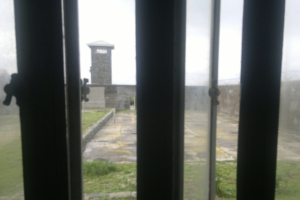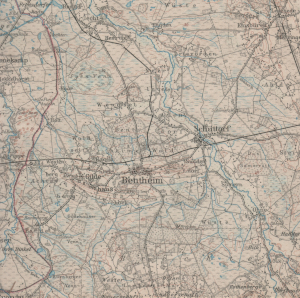Lekana
Lekana is Setwana and means "to be equal". It is, quite literally and with all its connotations, the root of democracy.
An Unlikely Connection of Distant Places
Pretoria, the capital of the Republic of South Africa, and Schüttorf, a small industrial town in Germany, are not only two places where the author has lived. They have a quite unlikely connection.
Pretoria got its name in reference to Andries Wilhelmus Jacobus Pretorius (1798-1853), one of the founders of the settler colony Zuid Afrikaanse Republiek (ZAR), commonly know as the Transvaal. He belonged to the fifth generation of European settlers, referencing Johannes Pretorius (1642-1694) as the one who initially emigrated from Holland to the Cape of Good Hope. And this Johannes Pretorius was the grandson of Barend Wesselszoon Pretorius, born around 1596 in Schüttorf, raised as a shoemaker, who moved as a yound adult to Leiden in The Netherlands, where he was buried in 1669.
It is possible to weave fascinating stories about this improbable connection (cf. Schulte 2024: 84).
Yet, this project is differently motivated, namely by the historical interest in the birth of modern democracy. Pretoria and Schüttorf both turned from a community into an industrial town at about the same time, the second half of the nineteenth century. This process is scrutinised in the studies collected here.
Modern Society as a New Period of Humanity
Today, democracy is challenged by different kinds of totalitarianism. Again.
The turmoil created by multitudes of people in a competitive world economy seem to motivate many individuals to voluntarily surrender their autonomy for the ostensible security provided by mighty authoritarian leaders. Again.
I see the root of this problem in the collective inability (or unwillingness) to transform modern society into a system that combines the fallback security of communities with the developmental freedom of world society.
To get closer to a solution, these webpages offer a catalogue of research on a single question at two distant places: How and why, exactly, did people transform their communities into modern societies?
To be sure, this was neither a peaceful evolution nor a straightforward progress. Right to the contrary, it was a violent and at times desastruous experiment. Yet, it was born out of the stalemate of authoritarian communities. Hence, the call for the "good old times" is the most treacherous ideology of all.
Modernity = Connecting Posts to Circuits
A main characteristic of modern society are circuits: cycles of money, loops of electricity, transport routes, and lines of communication. What makes them important is their capacity to lead back to their point of departure. Nobody would invest without the probable outlook of money coming back. Electric devices stop working when there is an interruption in its circulation. A journey is a movement with safe return – everything else is a bold adventure.
Hence, the approach of the studies here is to investigate how people built and constructed their circuits of communication by establishing ever faster flows of messages, goods and people. And by this, it is inevitably a contribution to postal history and philately.
Enjoy surfing.
References
- Schulte, Jürgen, 2024. Die Obergrafschaft vom Hören und Sagen. Heimatverein Samtgemeinde Schüttorf: Nordhorn.

